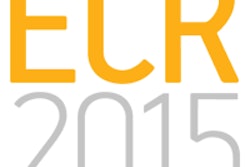
A new software tool developed at the Vienna Hospitals Association (K.A.V.) as part of a diploma thesis is proving successful in the systematic generation of radiology reports. Furthermore, it is compatible with the country's electronic health record system (ELGA).
Implementation documents for making medical reports ELGA-compatible have been available since 2012, but this is the first published work that describes how a key Austrian hospital group may automatically produce radiology reports that are viable for the platform.
The first prototype was tested with six radiology reports that were classified as technically valid documents by the ELGA tool. Medical validation, in the form of a review of the generated ELGA reports and a comparison of them with the source documents, will need to be carried out by radiologists over the coming months, if the system is to be routinely used within ELGA.
 The new publishing tool will mean that radiologists can continue using existing systems to create reports that will be compatible with ELGA, according to Georg Duftschmid, PhD.
The new publishing tool will mean that radiologists can continue using existing systems to create reports that will be compatible with ELGA, according to Georg Duftschmid, PhD."According to the ELGA timetable, the first hospitals will start becoming ELGA document sources by 1 January 2015. My hope for our prototype is that the K.A.V. can use it as a productive tool for converting their in-house radiology reports to the format prescribed by the national electronic health record (EHR) system ELGA," said computer and medical informatics specialist Georg Duftschmid, PhD, head of the Section for Medical Information Management and Imaging at the Medical University of Vienna and scientific advisor for the diploma thesis.
"Radiologists will continue using their current local systems for creating their reports. Our tool will be triggered when such a proprietary report must be submitted to ELGA. Therefore, it will support radiologists in the process of 'publishing' their local reports within the nationwide ELGA system," he added.
There has been no hard finish to the project, according to its other stakeholders and thesis co-authors. A thorough quality assurance process will take place before any publication of the reports in ELGA to ensure that they are correct with regard to syntax, semantics, and content, and it is hoped that routine automatic generation of ELGA-compatible radiology reports will take place before the end of the year.
The ELGA Act, passed in Austria in 2012, aims to create the legal basis for the country's first national EHR system, which will provide semantic interoperable sharing of several types of medical documents among Austrian healthcare providers. If successful, it will be one of the first EHR systems to be implemented in Europe.
"ELGA will interconnect hospitals, private (physician) practices, and nursing homes. There is no central storage, just a network of dedicated interconnected hospital servers for accessing report data," said Stefan Sabutsch, PhD, chair of HL7 Austria and responsible for standardization in ELGA GmbH, a government-owned enterprise entrusted with the implementation of ELGA.
The ELGA Act states that certain medical reports, including radiology, lab, and discharge summaries, must be structured in the HL7 Clinical Document Architecture (CDA) format to be exchanged over the ELGA platform and that implementation of ELGA-compatible reports must take place by 2018. This means that all providers will have to transform their documents from the proprietary formats of their local EHR systems into a common standardized format: Health Level Seven (HL7) Clinical Document Architecture (CDA) Release 2.0.
Furthermore, radiology reports will also need to adhere to a strict content format for physicians to more easily find the data they contain.
 A standard structure for radiology reports will allow physicians easy access to the relevant information, according to Stefan Sabutsch, PhD.
A standard structure for radiology reports will allow physicians easy access to the relevant information, according to Stefan Sabutsch, PhD."Until now, reports have often been written like a novel. Now radiology reports will also have to follow a certain content structure," Sabutsch said. "First, there will be the requested imaging studies information and the reason for study with some general facts about the case history. At the end of the report will be the interpretation and conclusions, which must be titled as such and not some other name so that everyone can find these data. As every section contains hidden machine readable codes, every part of the report can be accessed directly and, subsequently, may be computed."
The ELGA system as a whole will provide benefits for healthcare providers insofar as they will have access to a more or less "complete" history of their patients, with all reports available immediately after being published in ELGA to all authorized healthcare providers.
A parallel project is eMedication, in which every prescription and pharmaceutical treatment will be registered and stored centrally. This will allow doctors to check for medicine interactions and access medication information easily.
Radiologists using ELGA will be able to access other radiology reports, discharge summaries, lab reports, and complete up-to-date medication data to get a better overview of the patient. These tools will enable them to see if the patient has any allergies or contraindications for certain imaging modalities or contrast agents.
"The immediate availability of radiology reports in ELGA will generate a tighter overall healthcare workflow. This will lead -- in the long run -- to a more federated organization of healthcare providers for the treatment of outpatients. Second, the availability of highly structured reports will lead to an efficient processing of clinical details and, thus, support healthcare practitioners in the treatment act," said Konrad Hölzl, IT specialist at the K.A.V. and technical supervisor on the diploma thesis.
However, Hölzl noted there were areas needing clarification -- specifically, the handling of DICOM objects. Image access with ELGA was the next priority, Sabutsch confirmed.
"In the future, we want to be able to exchange images with ELGA, but at the moment we don't know which standards to use best for sharing, exchanging, and transforming images and whether there will be a duplicate dedicated storage of radiology images for ELGA, as there is with documents, or whether local PACS will be have to be accessed directly via ELGA," Sabutsch said. "We are looking for the right solution and this will take some time."



















